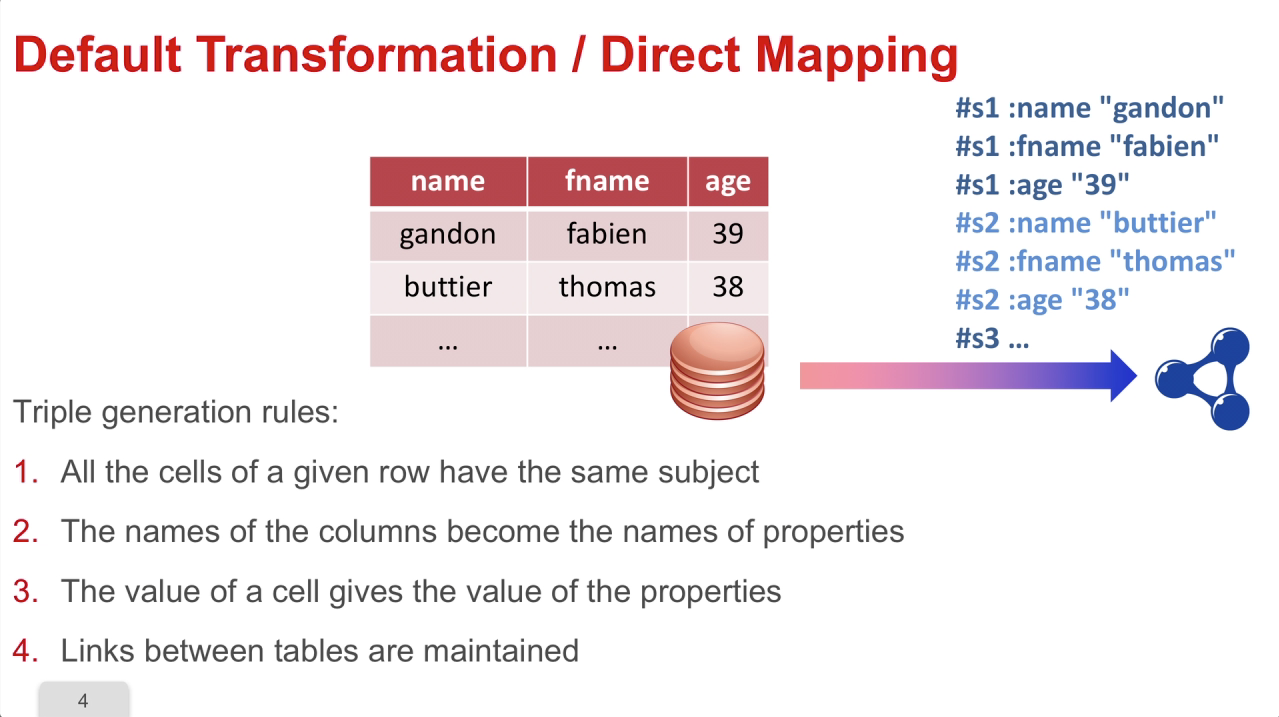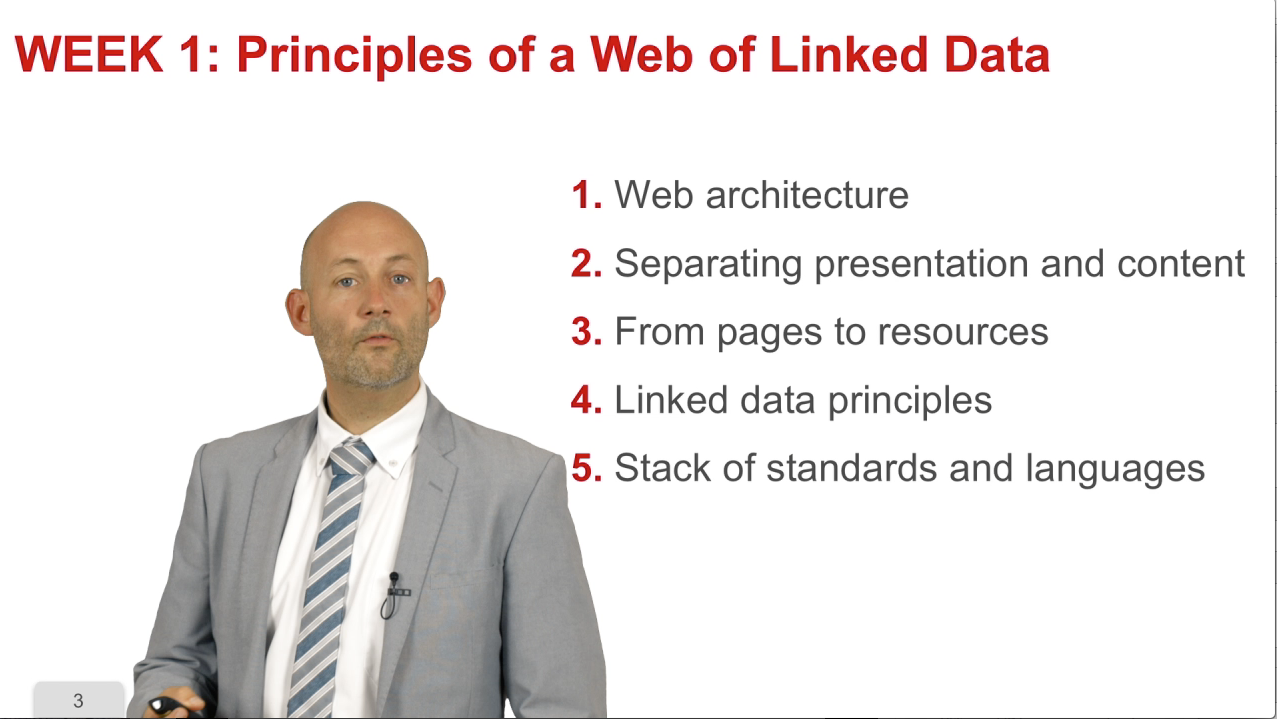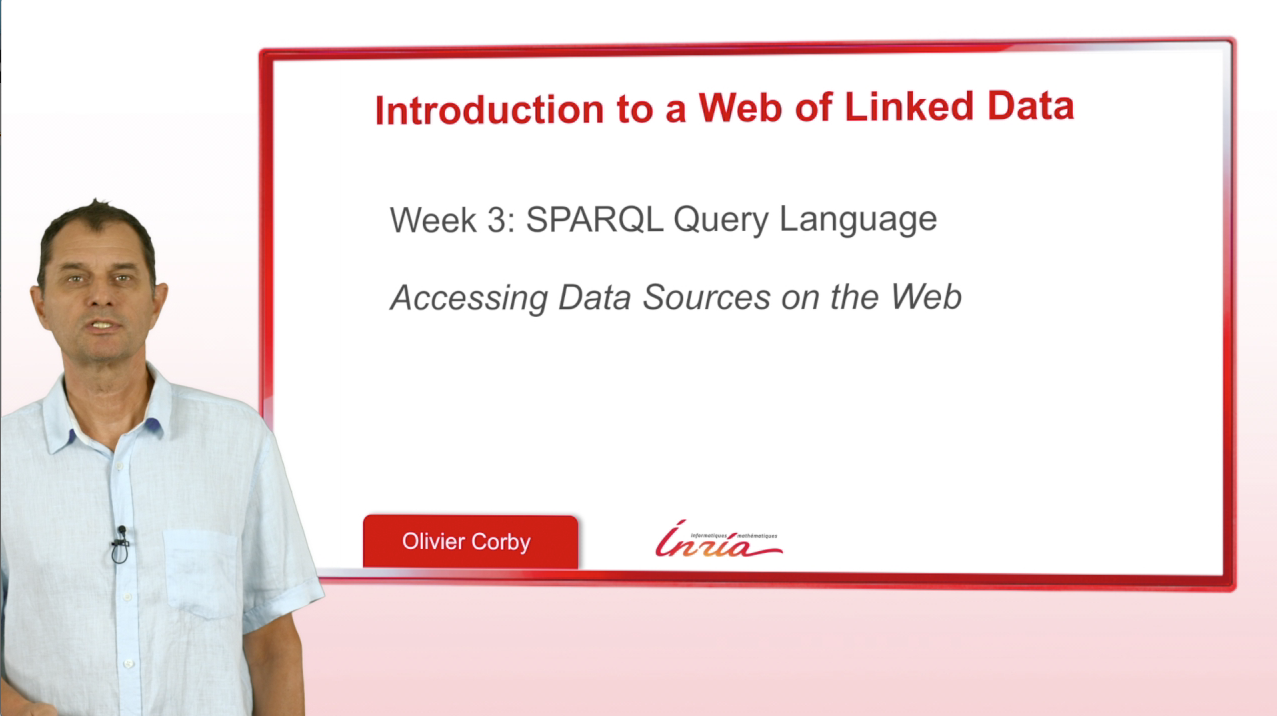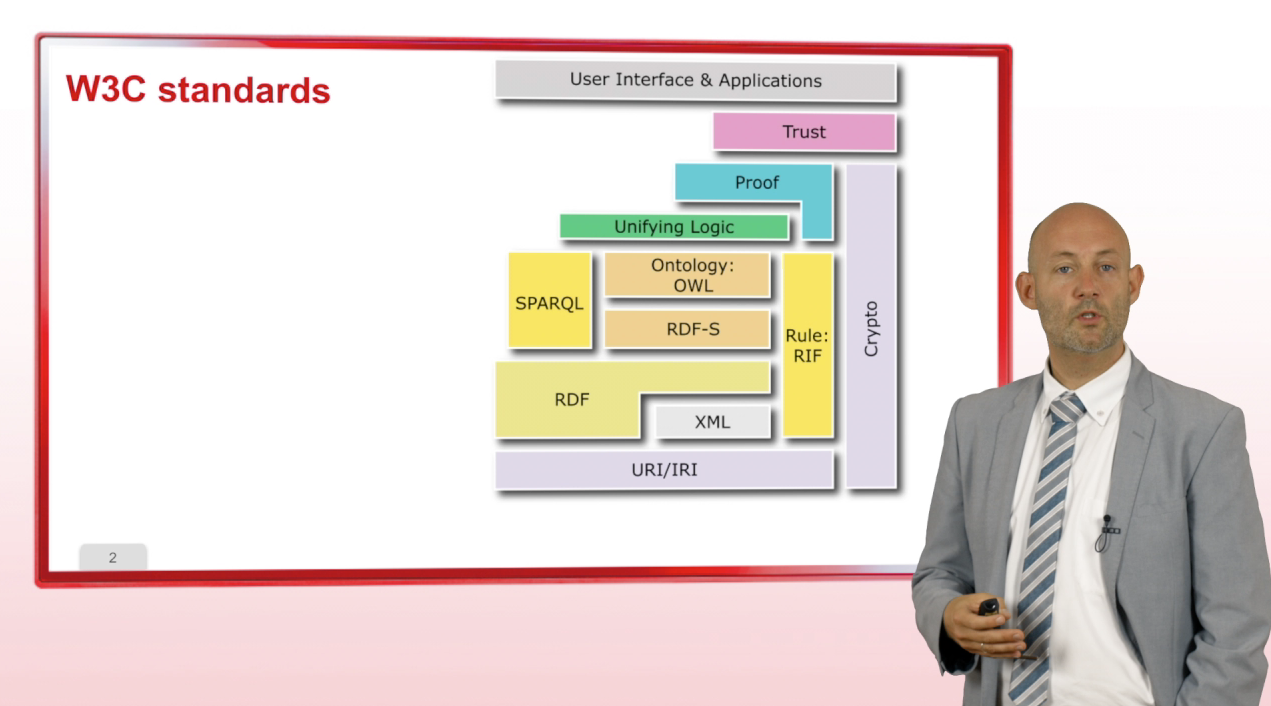
Faron, Catherine (19..-....)
Maîtresse de conférences en poste à l'Université de Nice-Sophia Antipolis (en 2020)
Autrice d'une thèse en sciences appliquées soutenue à Paris 6 en 1997
Professeur des Universités Université de Côte d'Azur
Rapporteure lors d'une thèse soutenue à l'INSA Lyon en 2024
Présidente du jury d'une thèse en Informatique à Université Côte d'Azur en 2024
Catherine FARON ZUCKER est maître de conférence à l’Université Nice Sophia Antipolis, responsable de la filière Web Science de l’école d’ingénieurs Polytech Nice Sophia et du Master 2 IFI de l’UNS et responsable adjointe de l’équipe de recherche Wimmics (Inria, I3S, CNRS, UNS).
Vidéos
Demos about a Web of Linked data
The BBC Web site uses linked (open) data The Wildlife documentary catalog on the Web site of BBC The Web site of BBC is structured and augmented with both internal and public linked data. In
2. A Triple Model and a Graph Model
This sequence will introduce the principles of the RDF model. We will see that it is a triple model and a graph model. RDF stands for
4. Pre and Post Processing
In the fourth part, we will see the pre and post processing of a SPARQL query. An RDF dataset is composed of a default graph
6. LDP : a REST API to linked data
This part is about the Linked Data Platform standard which provides the REST API to link data. This is a set of standardized HTTP and RDF
1. Historical Introduction to the Web Architecture
Going back in history, back in 1945, Vannevar Bush wrote an article entitled "As we may think". In this article, he
5. Representing groups
This sequence is about the specificities of the RDF model for representing groups. The type Bag is predefined in the RDF model to represent
2. GRDDL: extract RDF from X(HT)ML
GRDDL is a mechanism to extract RDF from XML and HTML.
1. RDF Graph Pattern Matching
This third part presents the SPARQL (pronounced sparkle) Query Language that enables users to query RDF triple stores. The SPARQL query language enables us to access data
5. Stack of Standards and Languages
Let us now conclude this first part with an overview of the stack of standards and languages that are used to publish data on the
2. Statements
This video présents the SPARQL Statements. The first statement is the optional pattern. It enables to specify a part of a graph pattern that is
4. Tabular data and metadata (CSV)
We are going to see how we can transform tabular data and metadata into RDF. These data are extremely common; they are generated by
3. Serialization Syntaxes
We saw in the previous sequence the principles of the RDF model by using an abstract syntax. This sequence will present you the












